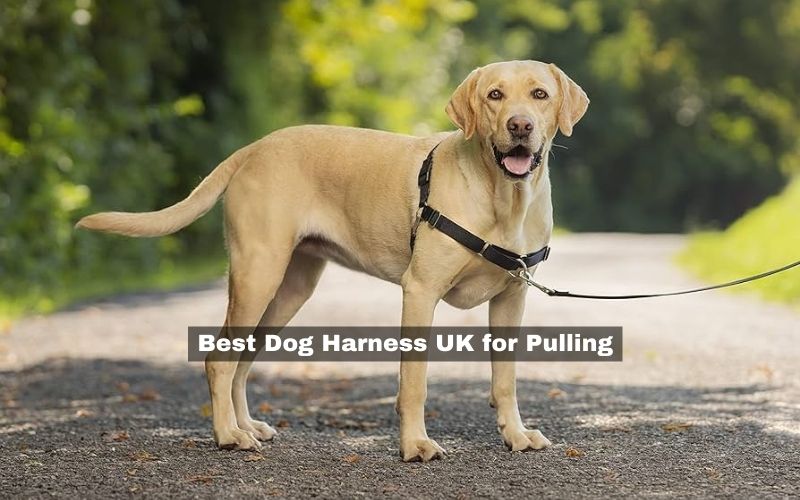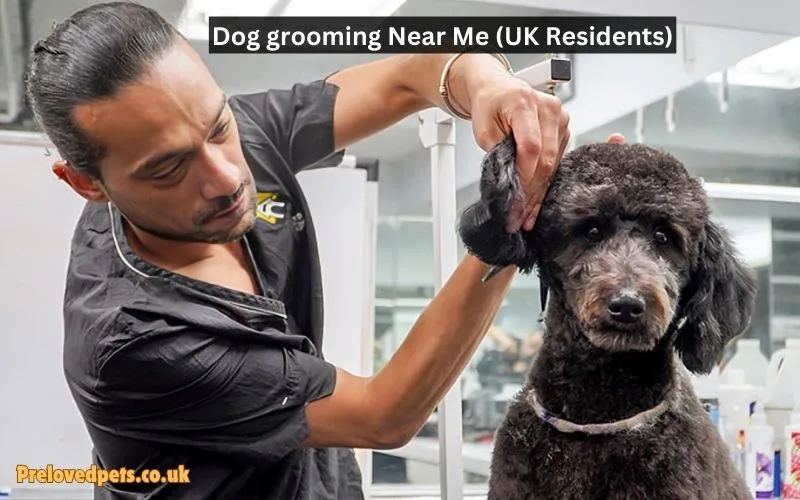Walking a dog that constantly pulls on the leash can be a frustrating and even dangerous experience for both you and your pet. Fortunately, a well-designed no-pull harness can make a significant difference, providing better control and making walks more enjoyable. In this comprehensive guide, we’ll explore the best dog harnesses available in the UK for pulling, understand why dogs pull, and offer tips on how to use these harnesses effectively.
Understanding Why Dogs Pull
Before diving into the best harness options, it’s important to understand why dogs pull on the leash. Here are some common reasons:
1. Excitement and Energy
Many dogs pull simply because they are excited and full of energy. The sights, sounds, and smells of the outdoors can be overwhelming, leading them to forge ahead.
2. Lack of Training
Some dogs haven’t been trained to walk politely on a leash. Without proper guidance, pulling becomes their default behavior.
3. Breed Characteristics
Certain breeds are more prone to pulling due to their working or hunting backgrounds. For instance, sled dogs like Huskies are bred to pull.
4. Reactivity
Dogs that react strongly to other animals, people, or stimuli might pull in response to these triggers.
5. Habit
If a dog has been allowed to pull in the past, it becomes a learned behavior that they continue.
Understanding these reasons can help you address the root causes and implement effective solutions alongside using a harness.
Top Dog Harnesses for Pulling in the UK
Here are some of the best harnesses available in the UK to help control pulling:
1. Ruffwear Front Range Harness
The Ruffwear Front Range Harness is a popular choice among dog owners and trainers for its durability and comfort.
- Features:
- Two leash attachment points: one on the chest and one on the back.
- Padded chest and belly panel for comfort.
- Four adjustment points for a secure fit.
- Reflective trim for visibility in low light.
- Pros:
- Effective at reducing pulling.
- Durable and long-lasting.
- Comfortable for extended wear.
- Cons:
- Can be pricier than other options.
- Some dogs may take time to adjust to the front clip.
2. Julius-K9 IDC Powerharness
The Julius-K9 IDC Powerharness is known for its robust design and versatility.
- Features:
- Sturdy handle on the back for additional control.
- Reflective edges and chest strap for safety.
- Customizable with various patches.
- Water-resistant materials.
- Pros:
- Extremely durable.
- Easy to put on and take off.
- Highly adjustable.
- Cons:
- The back clip can encourage pulling if not used with proper training.
- May be too bulky for smaller dogs.
3. Perfect Fit Modular Fleece Dog Harness
The Perfect Fit Modular Fleece Dog Harness is designed for maximum comfort and adjustability.
- Features:
- Made from soft fleece material to prevent chafing.
- Modular design allows for a customized fit.
- Front and back leash attachment points.
- Pros:
- Extremely comfortable for dogs with sensitive skin.
- Fully adjustable for a perfect fit.
- Helps reduce pulling effectively.
- Cons:
- More expensive than other options.
- Assembly can be a bit complex.
4. Kurgo Tru-Fit Smart Dog Walking Harness
The Kurgo Tru-Fit Smart Dog Walking Harness is a versatile harness designed for both walking and car safety.
- Features:
- Crash-tested for car safety.
- Five adjustment points for a secure fit.
- Padded chest plate for comfort.
- Front and back leash attachment points.
- Pros:
- Dual functionality for walking and car travel.
- Durable and comfortable.
- Effective at reducing pulling.
- Cons:
- Can be a bit heavy for smaller dogs.
- Some users find the fit challenging to adjust initially.
5. PetSafe Easy Walk Harness
The PetSafe Easy Walk Harness is specifically designed to discourage pulling and is often recommended by trainers.
- Features:
- Front leash attachment to steer your dog to the side.
- Martingale loop on the chest strap to prevent twisting.
- Quick-snap buckles for easy on and off.
- Pros:
- Highly effective at reducing pulling.
- Easy to put on and take off.
- Affordable.
- Cons:
- May not fit all body types perfectly.
- Some dogs find the front clip uncomfortable initially.
6. EzyDog Convert Harness
The EzyDog Convert Harness is designed for versatility and durability, making it a great choice for active dogs.
- Features:
- Tough construction with high-quality materials.
- Side D-rings for attaching accessories or saddle bags.
- Reflective stitching for visibility in low light.
- Padded for comfort and to prevent chafing.
- Sturdy control handle on the back.
- Pros:
- Built to last.
- Comfortable for long walks.
- Offers additional control with the handle.
- Cons:
- Can be expensive.
- Some dogs may find it bulky.
7. Halti No Pull Harness
The Halti No Pull Harness is specifically designed to stop pulling and is often recommended by trainers.
- Features:
- Dual control points: a front chest attachment and a back attachment.
- Padded chest panel for comfort and even pressure distribution.
- Multiple adjustment points for a secure fit.
- Reflective strips for visibility during night walks.
- Pros:
- Effective dual control.
- Comfortable for the dog.
- Enhances visibility.
- Cons:
- May take time for the dog to adjust.
- Can be slightly complex to fit initially.
8. Rabbitgoo No-Pull Dog Harness
The Rabbitgoo No-Pull Dog Harness is an affordable yet effective option for reducing pulling.
- Features:
- Front and back leash attachment points.
- Easy on and off with quick-release buckles.
- Four adjustable straps for a perfect fit.
- Reflective straps for enhanced visibility.
- Padded design for comfort.
- Pros:
- Affordable.
- Comfortable and adjustable.
- Effective at reducing pulling.
- Cons:
- May not be as durable as higher-end models.
- Some users report sizing issues.
Harness Training Techniques
Using a harness to control pulling is most effective when combined with proper training techniques. Here are some strategies to help manage pulling behavior:
Stop and Go Method
When your dog starts to pull, stop walking. Wait until they return to you or the leash slackens before continuing. This teaches your dog that pulling leads to stopping, not progress.
Change Direction
When your dog pulls, change direction abruptly. This keeps them focused on you and teaches them to pay attention to your movements.
Positive Reinforcement
Reward your dog with treats or praise when they walk nicely by your side. Positive reinforcement helps reinforce desired behaviors.
Short Training Sessions
Start with short training sessions to keep your dog engaged and focused. Gradually increase the duration as your dog improves.
Consistency
Be consistent with your training methods. Inconsistency can confuse your dog and make it harder for them to learn.
The Importance of Proper Fit
Ensuring the harness fits your dog properly is crucial for both effectiveness and comfort. Here’s how to measure and fit a harness correctly:
Measure Your Dog
Use a flexible tape measure to measure around the widest part of your dog’s chest, just behind the front legs. Also, measure the circumference of the lower neck.
Check Sizing Charts
Refer to the manufacturer’s sizing chart to choose the right size based on your measurements.
Adjust the Straps
Adjust the harness straps so that it fits snugly but comfortably. You should be able to fit two fingers between the harness and your dog’s body.
Check for Chafing
Ensure there are no areas where the harness rubs or chafes your dog’s skin. Padded harnesses can help prevent this.
Regular Checks
Regularly check the fit of the harness, especially if your dog is still growing or has gained or lost weight.
Case Studies: Success Stories with No-Pull Harnesses
To further illustrate the effectiveness of no-pull harnesses, here are some real-life success stories from dog owners:
Case Study 1: Bella, the Enthusiastic Labrador
Bella, a two-year-old Labrador, was notorious for pulling on walks. Her owner, Sarah, struggled to control her during their daily outings. After switching to the PetSafe Easy Walk Harness and incorporating positive reinforcement training, Sarah noticed a significant improvement. Bella began to walk more calmly by her side, and their walks became more enjoyable for both of them.
Case Study 2: Max, the Reactive Border Collie
Max, a reactive Border Collie, would lunge and pull at the sight of other dogs. His owner, Tom, opted for the Halti No Pull Harness due to its dual control design. The front chest attachment helped redirect Max’s attention, while the padded chest panel provided comfort. With consistent training, Max’s reactivity decreased, and Tom gained better control during walks.
Case Study 3: Daisy, the Energetic Jack Russell
Daisy, a high-energy Jack Russell, loved to explore and pull ahead on walks. Her owner, Emily, tried the Rabbitgoo No-Pull Dog Harness for its affordability and features. The front clip attachment worked wonders in curbing Daisy’s pulling, and the harness’s reflective straps made evening walks safer. Emily was thrilled with the results and Daisy’s improved walking behavior.
Harness Safety and Maintenance
Ensuring your dog’s harness is safe and well-maintained is critical for its effectiveness and longevity. Here are some tips on harness safety and maintenance:
Inspect Regularly
Regularly inspect the harness for signs of wear and tear. Check for frayed edges, weakened stitching, or damaged buckles. Replace the harness immediately if you notice any of these issues to prevent accidents during walks.
Proper Fit
An ill-fitting harness can cause discomfort or even injury to your dog. Make sure the harness fits snugly but not too tight. You should be able to fit two fingers comfortably between the harness and your dog’s body. Recheck the fit periodically, especially if your dog is still growing or has undergone weight changes.
Cleaning
Keeping the harness clean is essential for your dog’s hygiene and comfort. Most harnesses can be hand-washed using mild detergent and warm water. Some harnesses are machine washable, but always check the manufacturer’s instructions. Ensure the harness is completely dry before putting it back on your dog to prevent skin irritation.
Avoiding Overuse
While harnesses are designed for safety and comfort, they should not be left on your dog all the time. Prolonged use can lead to chafing or sores, especially in areas with high friction. Remove the harness when your dog is indoors or resting.
Alternatives to Harnesses
While harnesses are highly effective, some dog owners might seek alternative solutions to address pulling behavior. Here are a few alternatives:
Head Collars
Head collars, such as the Halti Headcollar, are designed to give you control over your dog’s head, which naturally controls the direction they move. When used correctly, head collars can reduce pulling effectively. However, they require proper introduction and training to ensure your dog is comfortable wearing them.
No-Pull Leashes
No-pull leashes, like the ThunderLeash, attach to your dog’s regular collar or harness and tighten gently around their chest when they pull. This discourages pulling without causing discomfort. These leashes are easy to use and can be a quick solution for minor pulling issues.
Training Techniques
Ultimately, training is the most effective long-term solution for pulling behavior. Enlisting the help of a professional dog trainer can provide tailored strategies to address your dog’s specific needs. Training methods such as loose-leash walking, clicker training, and reward-based techniques can reinforce good walking behavior.
Understanding Different Types of Harnesses
Harnesses come in various styles, each with its unique features and benefits. Here’s an overview of the different types of harnesses and how they can help with pulling:
Front-Clip Harnesses
Front-clip harnesses have a leash attachment on the front of the harness, usually on the chest. This design is particularly effective for reducing pulling, as it redirects your dog’s momentum to the side, making it harder for them to pull forward.
- Pros:
- Effective in reducing pulling.
- Provides better control.
- Helps train dogs to walk beside you.
- Cons:
- Can be less effective for strong pullers if not used correctly.
- Some dogs may find the front clip uncomfortable initially.
Back-Clip Harnesses
Back-clip harnesses have a leash attachment on the back, between the shoulder blades. While these harnesses are comfortable for dogs, they are less effective at reducing pulling behavior on their own.
- Pros:
- Comfortable for dogs.
- Easy to put on and take off.
- Suitable for small or non-pulling dogs.
- Cons:
- Not effective at reducing pulling.
- Can encourage pulling if used incorrectly.
Dual-Clip Harnesses
Dual-clip harnesses offer both front and back leash attachment points, providing versatility and greater control. They are ideal for training and transitioning dogs from pulling to polite walking.
- Pros:
- Versatile and adjustable.
- Effective for training purposes.
- Provides multiple options for leash attachment.
- Cons:
- Can be more expensive.
- Slightly more complex to put on and adjust.
Step-In Harnesses
Step-in harnesses are designed for easy use, requiring your dog to step into the harness, which then fastens on their back. These harnesses can be convenient for dogs that dislike having a harness slipped over their head.
- Pros:
- Easy to put on and take off.
- Comfortable for dogs.
- Suitable for dogs with head sensitivity.
- Cons:
- Less effective at reducing pulling.
- May not offer as much control as front-clip harnesses.
Common Mistakes to Avoid
When using a harness to control pulling, it’s essential to avoid common mistakes that can hinder progress or cause discomfort for your dog:
Using the Wrong Size
Using a harness that is too small or too large can lead to discomfort, chafing, or escape. Always measure your dog accurately and follow the manufacturer’s sizing guidelines to ensure a proper fit.
Incorrect Placement
Placing the harness incorrectly can reduce its effectiveness and cause discomfort. Make sure the harness is positioned correctly according to the manufacturer’s instructions, with straps adjusted to fit snugly but comfortably.
Lack of Training
Relying solely on the harness to stop pulling without proper training is a common mistake. Combine the use of a harness with consistent training techniques to achieve the best results.
Over-Tightening
While a snug fit is essential, over-tightening the harness can cause discomfort and restrict movement. Ensure you can fit two fingers comfortably between the harness and your dog’s body.
Reviews from Dog Owners
Hearing from other dog owners can provide valuable insights into the effectiveness of different harnesses. Here are some reviews from UK dog owners who have used no-pull harnesses:
John and Max (Golden Retriever): “I’ve tried several harnesses for Max, but the Ruffwear Front Range has been a game-changer. It’s durable, easy to adjust, and Max seems comfortable in it. The front clip really helps with his pulling, and our walks have become much more enjoyable.”
Emma and Bella (French Bulldog): “Bella has a lot of energy and used to pull a lot on walks. The Julius-K9 IDC Powerharness has made a big difference. It’s sturdy and comfortable for her, and the handle on the back gives me extra control when needed. Plus, the reflective edges are great for our evening walks.”
Rachel and Duke (German Shepherd): “Duke is a strong puller, and the Halti No Pull Harness has worked wonders. The dual control points make it easier to manage him, and the padded chest panel is comfortable for him. We’ve seen a significant reduction in pulling since we started using it.”
Expert Opinions
Experts in dog training and behavior also offer valuable perspectives on the use of harnesses for pulling dogs:
Dr. Sarah Ellis, Animal Behaviorist: “No-pull harnesses can be an effective tool for managing and reducing pulling behavior in dogs. However, it’s crucial to combine their use with proper training techniques. Understanding the root cause of the pulling and addressing it through positive reinforcement can lead to long-term success.”
Jane Williams, Professional Dog Trainer: “I often recommend front-clip harnesses to my clients with pulling dogs. These harnesses can provide immediate relief from pulling while we work on training. It’s important to choose a harness that fits well and is comfortable for the dog to ensure consistent use and effectiveness.”
See Also: Dog Hot Spot Healing Stages
Conclusion
A well-chosen no-pull harness can significantly improve your walking experience with your dog by reducing pulling and providing better control. The options discussed in this article, including the Ruffwear Front Range, Julius-K9 IDC Powerharness, Perfect Fit Modular Fleece Dog Harness, Kurgo Tru-Fit Smart Dog Walking Harness, PetSafe Easy Walk Harness, EzyDog Convert Harness, Halti No Pull Harness, and Rabbitgoo No-Pull Dog Harness, are among the best available in the UK.
Remember, the key to success lies in pairing the harness with consistent training and positive reinforcement. By understanding the reasons behind your dog’s pulling behavior and addressing them effectively, you can enjoy more pleasant and controlled walks with your furry friend. Regularly check the fit and condition of the harness, and consider the various types and features to find the best match for your dog’s needs. With patience, persistence, and the right tools, you can transform your walks into enjoyable and stress-free experiences.


